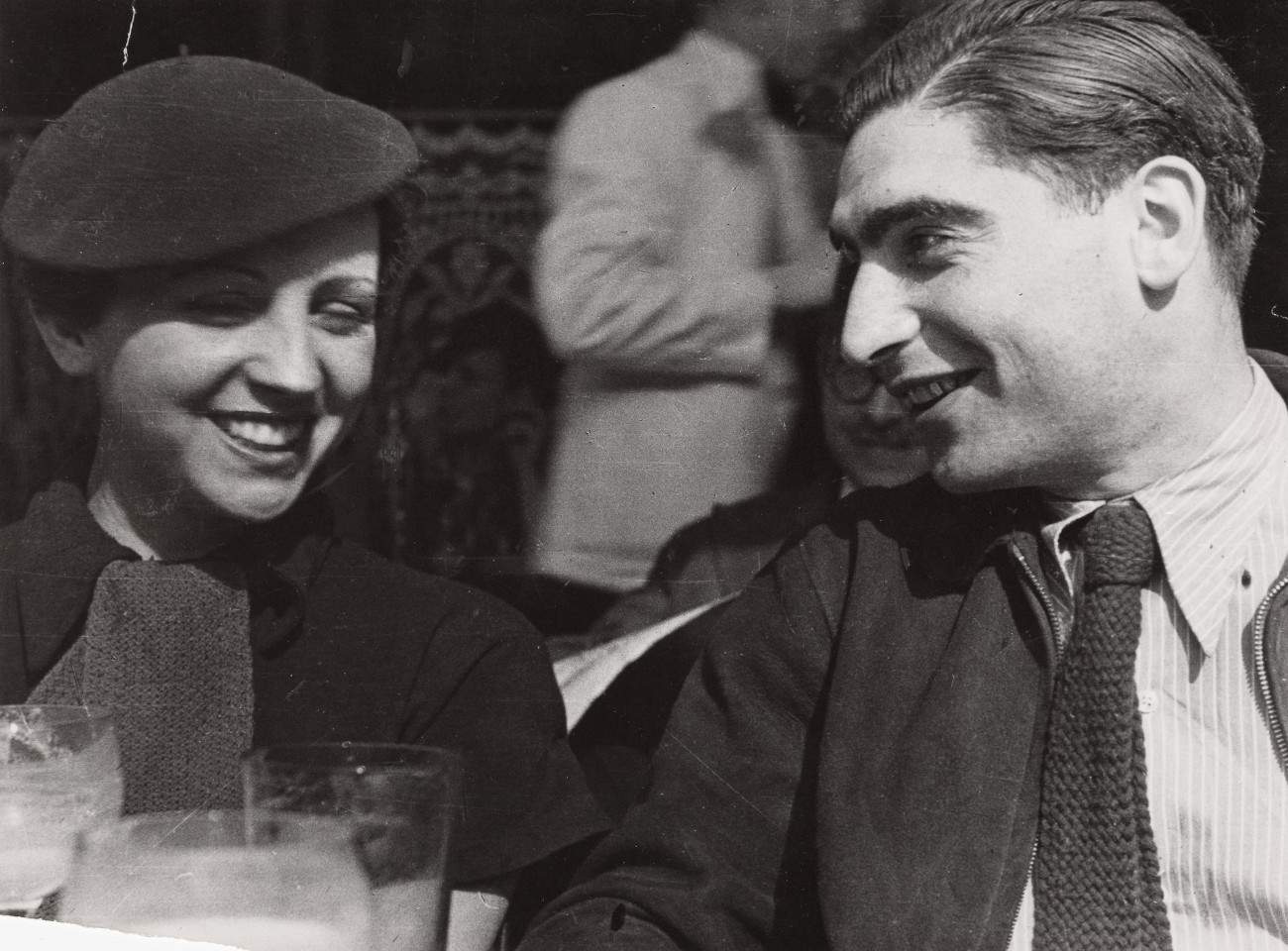From Feb. 14, CAMERA - Centro Italiano per la Fotografia in Turin kicks off its 2024 exhibition program with three new exhibitions dedicated to the great masters of international photography, from Robert Capa and Gerda Taro to Ugo Mulas and Michele Pellegrino. From images of the Spanish Civil War to the Milan of the economic boom, via the romantic landscapes of a rural Piedmont: these are the major themes of the three exhibitions.
The exhibition Robert Capa and Gerda Taro: Photography, Love, War, curated by Walter Guadagnini and Monica Poggi, which can be visited from Feb. 14 to June 2, 2024, recounts through 120 or so photographs the professional and sentimental relationship between Robert Capa (Budapest, 1913 - Thai Binh, 1954) and Gerda Taro (Stuttgart, 1910 - Brunete, 1937), tragically interrupted by the photographer’s death in Spain. Fleeing Nazi Germany she, emigrating from Hungary he, Gerta Pohorylle and Endre, Frenchified André Friedmann, met in Paris in 1934, forging an artistic and sentimental partnership that led them to frequent the cafés of the Latin Quarter but also to engage in photography and political struggle. To try to entice the publishers of a Paris in turmoil, Gerta invents the character of Robert Capa, a rich and famous American photographer recently arrived on the continent, an alter ego with whom André will identify for the rest of his life. She also changes her name and takes on that of Gerda Taro. The decisive year for both of them is 1936: in August they travel to Spain to document the Spanish Civil War; the following month Capa will shoot the shot of the Militiaman shot dead, while Gerda Taro takes his most iconic photograph: a militiawoman in training, pistol pointed and shoes in heels, with an unprecedented view of war made and represented by women. The two photographers produce numerous other shots that bear witness to both the war and the daily lives of soldiers, female soldiers and the population involved in the conflict.
The couple’s photographs are published in the leading newspapers of the time, securing them great fame and many requests for work. Between 1936 and 1937 the pair documented strikes in Paris, the 1937 elections in Spain, and the International Convention of Antifascist Writers in Valencia, portraying such prominent figures as André Malraux and Ilya Ehrenburg. However, during the Battle of Brunete in Spain on July 24, 1937, Gerda Taro was tragically hit by a tank and died, ending the life of the first war reporter. The following year, Robert Capa produced the celebrated volume Death in the Making, dedicated to his companion, in which many of the images visible in the exhibition are found, of both photographers. The exhibition thus tells the extraordinary story of Gerda Taro and Robert Capa, documenting their intense experience of photography, war and love. On display are photographs by both of them, along with reproductions of some specimens from the famous Mexican suitcase containing 4,500 negatives taken in Spain by Robert Capa and Gerda Taro and their friend David Seymour. The exhibition is accompanied by a catalog published by Dario Cimorelli Editore with texts by the curators.
Also starting from Feb. 14 to April 14, 2024, the exhibition Ugo Mulas / Saul Steinberg’s Graffiti in Milan, curated by Archivio Ugo Mulas and Walter Guadagnini, will be held in CAMERA’s Project Room. In 1961 Saul Steinberg made an extraordinary graffiti decoration of the atrium of Palazzina Mayer in Milan, commissioned by Studio BBPR, which was overseeing its renovation. When the work was completed, Steinberg asked a young Ugo Mulas for the task of witnessing the work. In 1997 the Palazzina was renovated again, and the graffiti destroyed: today, only Ugo Mulas’s photographs remain of that splendid intervention, capable of restoring together the document of the work and its interpretation. The exhibition intends to recount that event, re-proposing to scale the entire decoration from Mulas’ photographs.
The third exhibition, entitled Michele Pellegrino. Photographs 1967-2023, can be visited from Feb. 14 to April 14, 2024. Organized by CAMERA and Fondazione Cassa di Risparmio di Cuneo with the curatorship of Barbara Bergaglio and a text by Mario Calabresi, the exhibition displays more than fifty images by photographer Michele Pellegrino (Chiusa Pesio, 1934). The exhibition offers a brief anthology of the photographer’s creative journey, which ranges from mountains, rituals, faces and moments of peasant life. Also presented is a digital selection resulting from the cataloging and digitization completed by CAMERA on the photographer’s archive, acquired by the CRC Foundation as part of the Donare project. The exhibition is complemented by a reading of four landscape photographs included in the Artistic Botanical Atlas of the Flora and Landscape of Northern Italy, a research conducted at the University of Udine by doctoral student Alessia Venditti under the supervision of professors Alessandro Del Puppo and Valentino Casolo, funded by the Intesa Sanpaolo Onlus Foundation.
Alongside the temporary exhibitions, the Center’s La Manica Lunga houses the permanent exhibition The History of Photography in Your Hands, which aims to offer a long timeline accessible to everyone, including the blind and visually impaired, with text, images and video material.
Image: Fred Stein, Gerda Taro and Robert Capa Cafe de Dome, Paris 1936 © Estate Fred Stein. Courtesy International Center of Photography
 |
| At CAMERA Turin three new exhibitions on the great masters of photography, from Robert Capa and Gerda Taro to Ugo Mulas |
Warning: the translation into English of the original Italian article was created using automatic tools. We undertake to review all articles, but we do not guarantee the total absence of inaccuracies in the translation due to the program. You can find the original by clicking on the ITA button. If you find any mistake,please contact us.